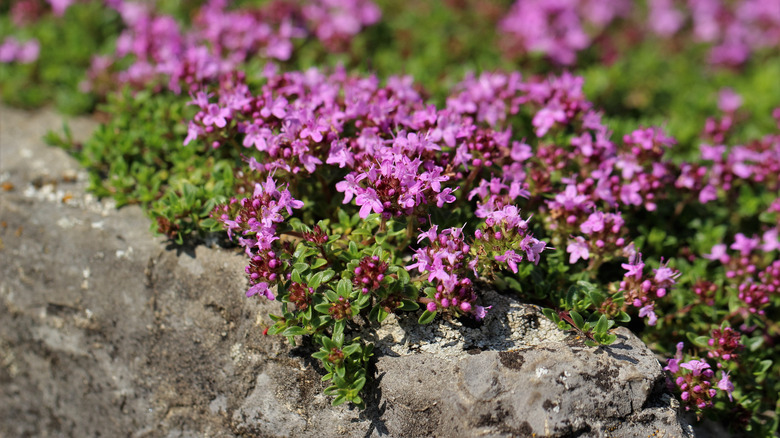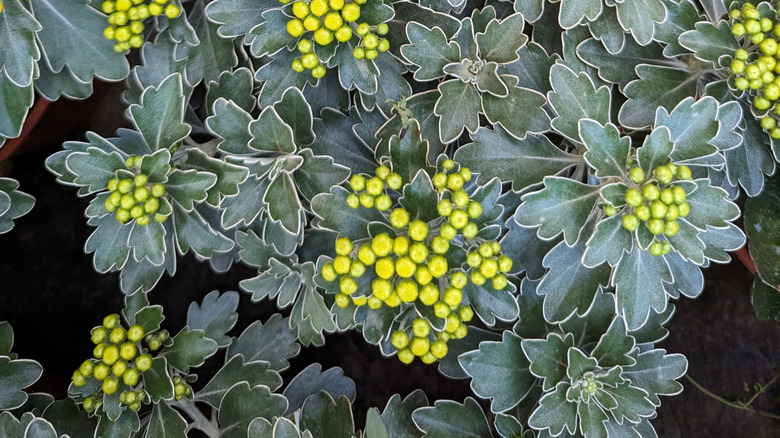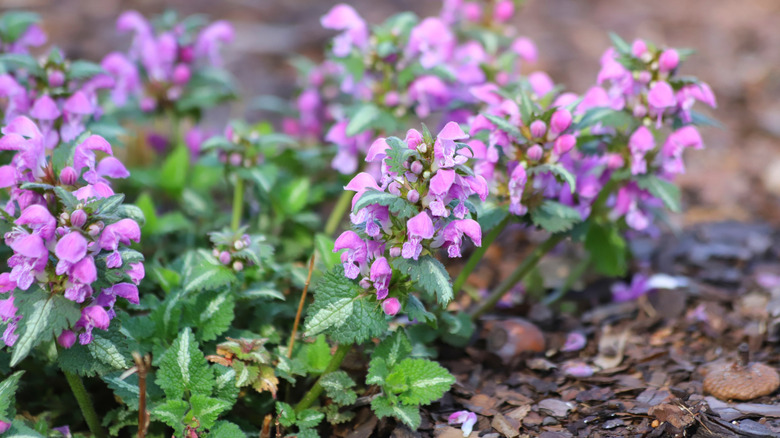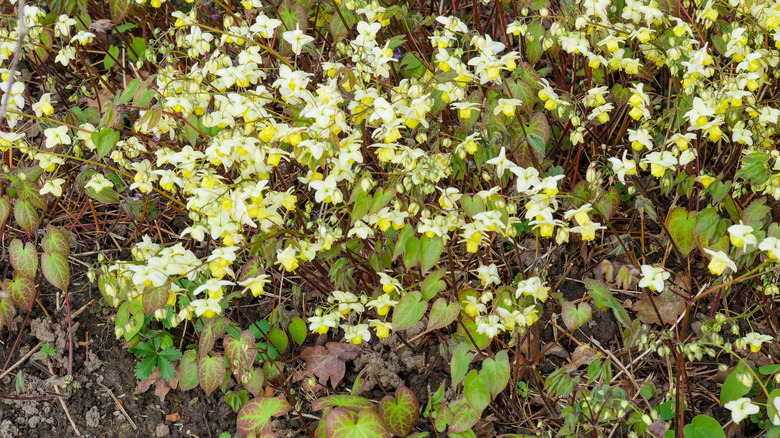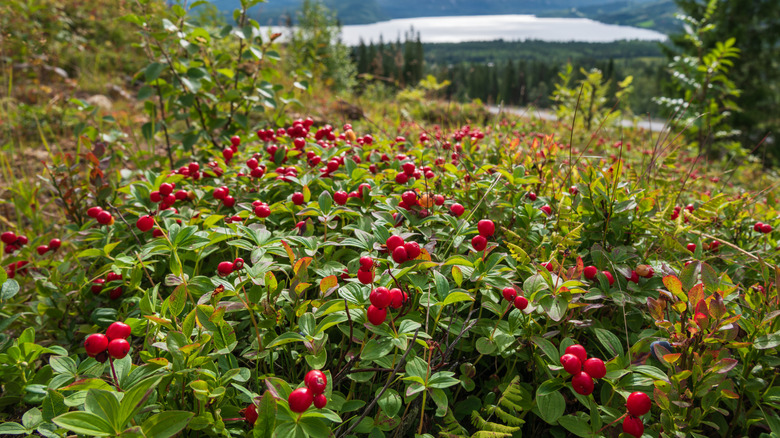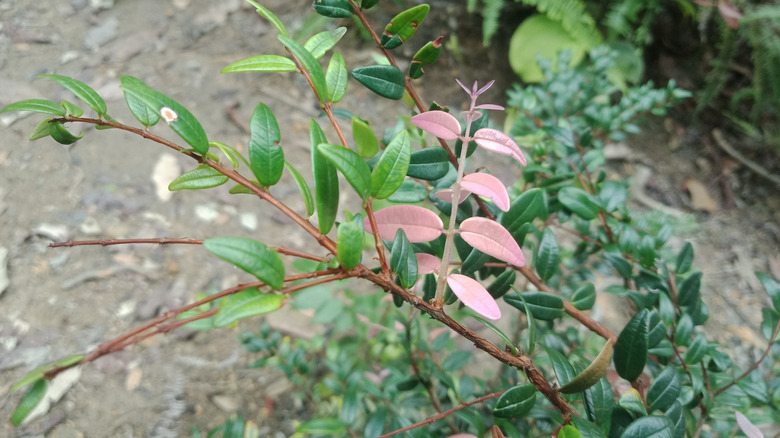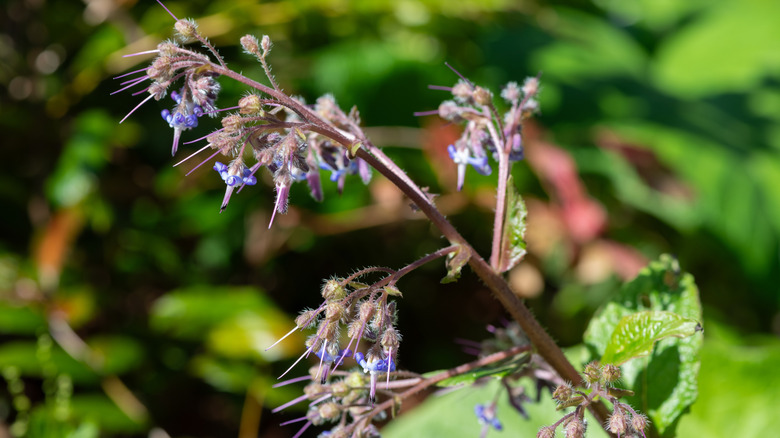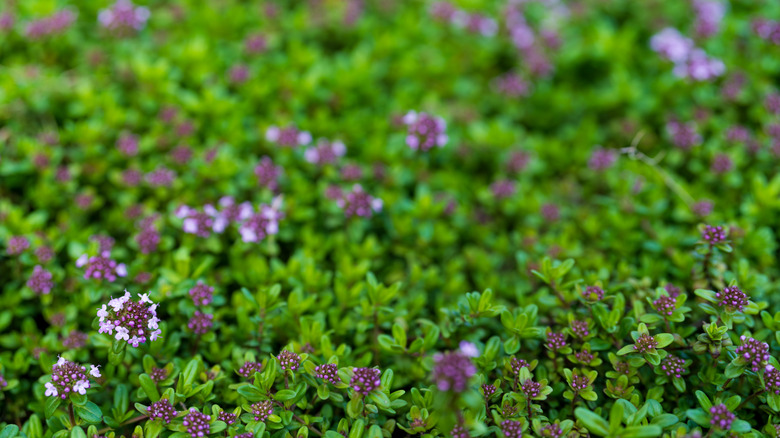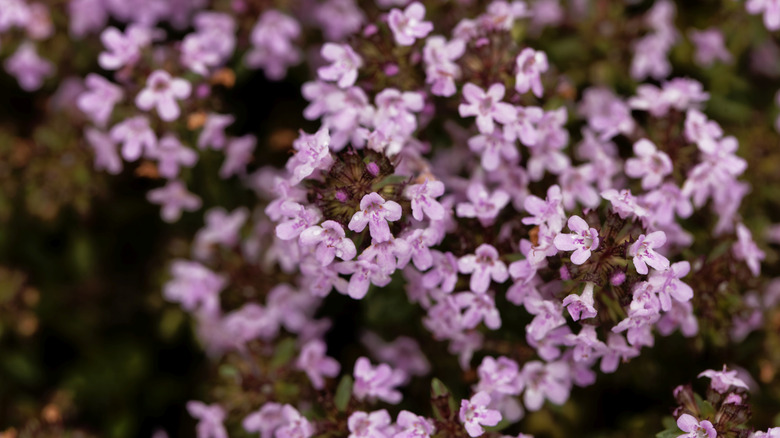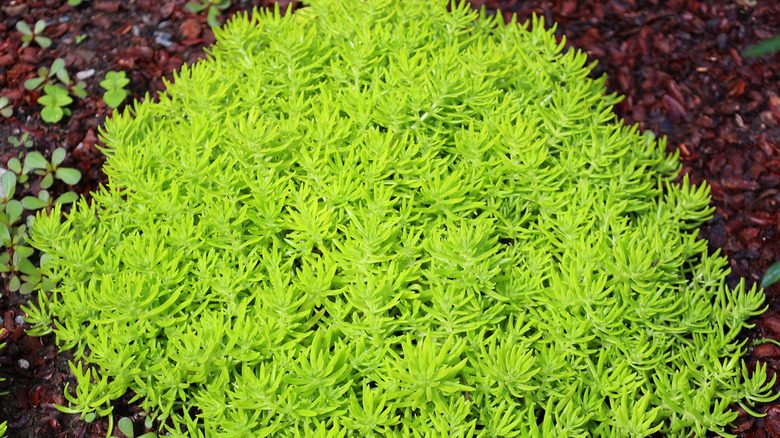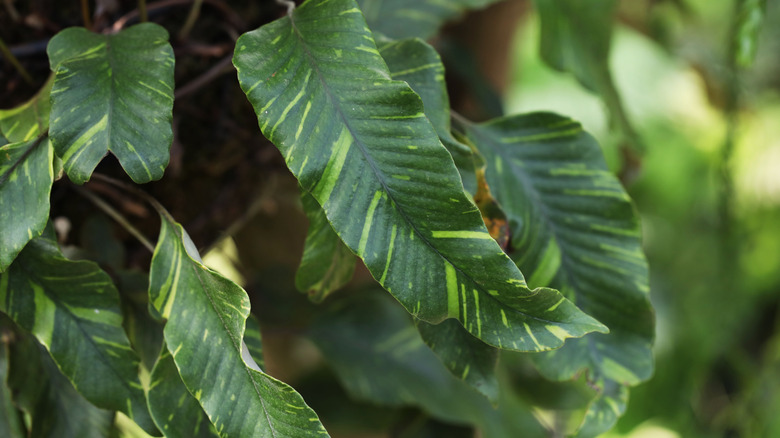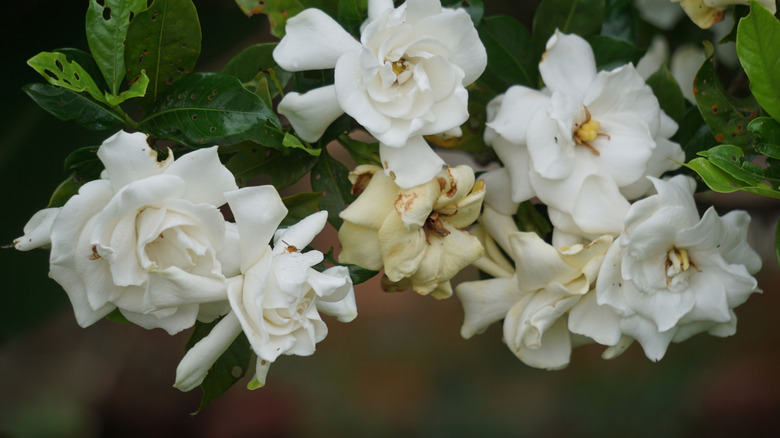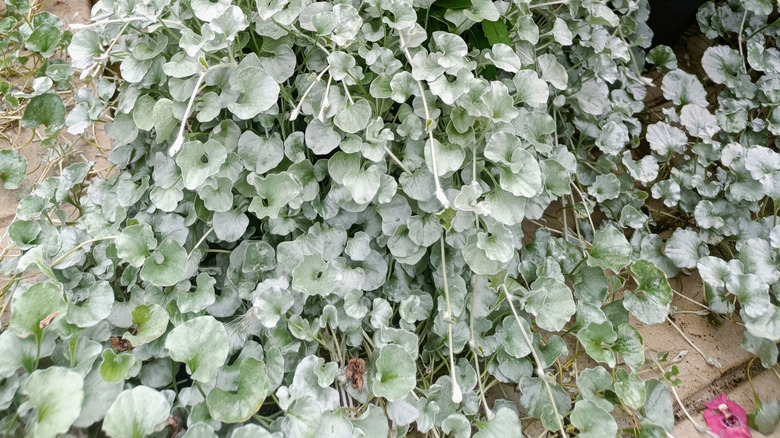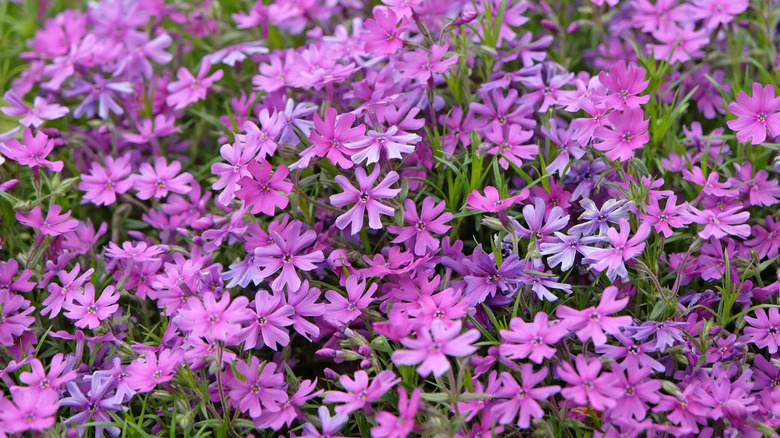16 Beautiful Ground Cover Plants That Are Also Drought-Resistant
We may receive a commission on purchases made from links.
Whether it's the hottest part of summer or you have soil that can't hold moisture to save its life, you might feel you're doomed to have a barren, ugly landscape. Maybe you've tried to plant things before and had them wilt faster than you thought possible, or watched helplessly as your patch of flowers turned into a brown, crispy mess. Not all hope is lost. There are ground covers that can handle drought and neglect without sacrificing beauty.
We've picked 16 of our all-time favorite, stunning, drought-tolerant ground covers that are tough as nails. These plants aren't just pretty, they're resilient and adaptable to almost any situation. We'll go over what type of growing conditions each needs and a few tips for keeping them pretty and perky throughout the growing season.The best part is you don't need to be an expert gardener to keep these plants happy.
Silver and gold chrysanthemum (Ajania pacifica)
The Silver and gold chrysanthemum (Ajania pacifica) is one of our favorite ground covers because of its variegated foliage. Its lovely enough in full bloom with its button-like gold flowers cheering up any fall landscape while other plants have long since gone dormant. Plus, it's hardy and prefers well-draining soil over moisture-holding, making it great for dry areas that don't get lots of rain.
Ajania pacifica loves full sun, though it wouldn't mind protection from the full afternoon sun if you've got it. It's not picky about soil conditions, just as long as its roots aren't perpetually soaked. Pinch back the plant once it gets leggy to keep its bushy form, and consider giving it some protection from harsh winter conditions if you live below USDA Hardiness Zone 5 as this plant does best in zones 5 through 9. You can use anything from burlap to pre-made covers, like this four pack of Winter Plant Covers from Svepndic.
Prairie everlasting (Antennaria neglecta)
Prairie everlasting (Antennaria neglecta) is a super charming ground cover that stays low and forms a soft mat of silvery basal leaves. Its fuzzy flower clusters show up in the spring and resemble cats' paws, adding a delicate touch to small spaces or rock gardens. The subtle white blooms last for a few weeks, and the plant eventually spreads by stolons, creating a dense, silvery carpet that's both visually appealing and great for sensory landscapes.
This tough, little perennial prefers full sun to partial shade and thrives in dry, well-drained soils, including poor, rocky, or clay-heavy ground where other plants might struggle. To keep it looking its best, provide good drainage and avoid overwatering, especially in winter. These plants do best in zones 3 to 8. While prairie everlasting is low-maintenance, it's usually a good idea to clear away heavy leaf litter so that no moisture gets trapped near its stolons, leading to rot.
Spotted dead nettle (Lamium maculatum)
Spotted dead nettle (Lamium maculatum) is a versatile ground cover that brightens shady spots with its silvery-green leaves that have an unusual white stripe right down the middle. Growing up to around 9 inches max and spreading up to 2 feet wide, this fast grower offers a lush carpet that livens up heavy shade and tricky spots under trees or beside walkways. In spring and summer, its blooming clusters of tiny pink, purple, or white flowers almost resemble praying mantis arms, making it a truly unique plant that keep a shade garden interesting well into the growing season. This plant is hardy in zones 3 to 8.
Lamium maculatum prefers moist, well-drained soil in partial to full shade, though it will tolerate the occasional dry conditions, especially once it's mature. It's low-maintenance to a limit and can suffer if its soil dries out completely or if exposed to too much sun. Consider giving it a little afternoon cover and a drink once in a while. While deer tend to avoid it, but occasional aphids or slugs might visit, so keep an eye out.
Barrenwort (Epimedium × perralchicum 'Frohnleiten')
Barrenwort (Epimedium × perralchicum 'Frohnleiten') brings color to shady spots with clusters of bright yellow flowers in spring that almost look like buttercups. However, its real appeal is the foliage: Heart-shaped leaflets that emerge green and marbled with bronze in spring eventually turn solid green by summer, then bring that bronze marbling back in autumn, giving you three seasons of visual interest. Growing 6 to 12 inches tall and spreading 12 to 18 inches wide, this rhizomatous perennial forms a lush carpet that's perfect for those tricky spots beneath trees or along shaded borders.
Bishop's hat, as its also known, thrives in partial to full shade with moist, well-drained soil that's rich in organic matter and slightly acidic. Once established, it tolerates some drought, making it a solid pick for dry shade gardens. Cut back old foliage in late winter before new growth appears to keep it looking fresh, and divide clumps every few years if you want to expand its coverage. This low-maintenance perennial is hardy in zones 5 to 9 and spreads slowly by rhizomes, so you won't have to worry about it taking over. It also rarely suffers from pests or diseases.
Bearberry (Arctostaphylos uva-ursi)
Bearberry (Arctostaphylos uva-ursi) is a tough, evergreen ground cover that handles harsh conditions like a champ. Its small, glossy, dark green leaves create a dense mat that spreads low to the ground, typically staying under 6 inches tall but spreading several feet over time. In spring, tiny white or pink bell-shaped flowers will appear, followed by bright red berries in late summer and fall that add a pop of color and can also attract birds. The foliage itself turns into a bronze, reddish color in winter, giving you year-round interest in spots where most plants would struggle.
This low-maintenance shrub thrives in full sun to partial shade and prefers dry to moderately moist, well-drained soils in zones 3 to 7. Bearberry is naturally adapted to rocky sites, sandy hills, and mountain ranges, so it's perfect for dry areas that don't get much rain. It prefers slightly acidic soil and doesn't do well in heavy clay or wet conditions, so good drainage is key to keeping it healthy and spreading. Once established, it's highly tolerant of drought and rarely needs supplemental watering.
Creeping blueberry (Vaccinium crassifolium)
Creeping blueberry (Vaccinium crassifolium) is a native, low-growing evergreen shrub that gives a year-round display and makes a fantastic drought-resistant ground cover. Its tiny, glossy leaves stay dark green creating a dense mat that hugs the ground at just a few inches tall. Then in spring, delicate pink or white bell-shaped flowers appear, followed by small, edible dark blue berries in summer that birds absolutely love. Come fall and winter, the foliage takes on reddish-bronze tones, which can be a much-needed burst of color during this time.
Vaccinium crassifolium thrives in full sun to partial shade and prefers acidic, well-drained soils. Native to the U.S., creeping blueberry is naturally adapted to sandy, poor soils and handles drought conditions with ease once established in zones 6 to 9. It spreads slowly but steadily, forming a thick carpet that's perfect for slopes, rock gardens, or dry spots where other plants struggle. Keep the soil slightly moist while it gets settled in, but after that, it's pretty hands-off and rarely needs extra watering.
Early flowering borage (Trachystemon orientalis)
Early flowering borage (Trachystemon orientalis) is a low-maintenance herbaceous perennial that puts on quite a show. In the late winter and early spring, clusters of small, bright blue, star-shaped flowers pop up before the foliage even fully emerges, giving you color when most gardens are still waking up. Once those blooms fade, the real ground cover magic happens, because its large, heart-shaped leaves measuring 10 to 12 inches spread out to create a dense, overlapping blanket of green that smothers weeds and fills in bare spots beautifully.
Trachystemon orientalis thrives in heavy shade to partial sun and handles drought, erosion, and poor soil conditions without complaining in zones 6 to 9. It's perfect for those tricky dry shade areas under trees or along slopes where other plants struggle. Once established, this edible perennial requires little to no care beyond keeping it from spreading, as it can be overzealous if not pruned every once in a while. Plant it in well-drained soil and give it some room to spread, then sit back and let it do its thing.
Wild thyme (Thymus serpyllum)
Wild thyme (Thymus serpyllum) is an evergreen ground cover that spreads low and stays compact, growing just 2 to 3 inches tall and 3 to 12 inches wide. Its tiny leaves create a dense, soft mat that releases a wonderful fragrance when crushed or stepped on, making it perfect for planting between pavers or along pathways. In late spring to early summer, clusters of small pink, purple, or white flowers blanket the foliage, attracting bees and butterflies while adding a delicate splash of color to rock gardens or sunny slopes.
Thymus serpyllum thrives in full sun and prefers well-drained, sandy, or gravelly soils in zones 4 to 9. This tough little plant is highly drought-tolerant once established and actually prefers dry conditions over moist ones, so keep your watering light. It's perfect for hot, dry spots where other ground covers struggle and can handle poor soil. Wild thyme requires minimal maintenance, just occasional trimming after flowering to keep it tidy and encourage fresh growth.
Creeping thyme (Thymus praecox)
Creeping thyme (Thymus praecox) is a low-growing, woody-based perennial that puts on the most spectacular show when it blooms. It remains evergreen in mild winters, keeping its fuzzy, bluish-green leaves year-round. but from late spring through summer, this plant gets absolutely smothered in a dense carpet of tiny tubular flowers in shades of bright pink, vibrant purple, or even magenta-red, depending on the variety. The colorful blooms completely cover the foliage, turning entire sections of garden into buzzing, fragrant mats that attract bees and butterflies. Growing just 3 to 6 inches tall and spreading vigorously, it forms a lush, dense ground cover perfect for pathways, rock gardens, or filling gaps between pavers in zones 5 through 8.
Thymus praecox needs full sun and does best in sandy or rocky soils where its more likely to be dry than damp. Give it a trim after blooming to encourage fresh growth and keep it looking tidy, but otherwise it's pretty hands-off once settled in. Water lightly while it gets established, then let it fend for itself, as it thrives in dry, lean conditions.
Caraway thyme (Thymus herba-barona)
Caraway thyme (Thymus herba-barona) is a low-growing evergreen ground cover that may look like its thyme cousins but stands out thanks to its distinctive aroma. Unlike the more floral or herbal scent of wild or creeping thyme, this variety releases a warm, spicy aroma, making it perfect for planting near walkways where you can get the occasional, delightful whiff. Growing 3 to 6 inches tall and about a foot wide, it forms a dense, dark green mat dotted with tiny pink flowers in late spring and early summer. Plus, it's also a culinary herb, so you can snip some for cooking if you're feeling adventurous.
Thymus herba-barona prefers full sun and thrives in well-drained, sandy, or rocky soils. Once established, it becomes drought-tolerant and requires very little care beyond the occasional trim to keep it looking tidy. This variety is particularly good at handling heat and lean soils, so it's perfect for dry slopes, rock gardens, or spots where nothing else seems to want to grow in zones 4 through 8. Water sparingly in the beginning, then back off and let it do its thing.
Lemon coral stonecrop (Sedum maxicanum 'Lemon coral')
Lemon coral stonecrop (Sedum mexicanum 'Lemon Coral') is a low-growing, succulent ground cover that brings an almost flourescent pop of lime-green color to dry spots. Its needle-like leaves grow densely along trailing stems, creating a vibrant, textured mat that looks almost neon when the sun hits it just right. In summer, small star-shaped yellow flowers appear, though the real attraction is that electric lime foliage that stays colorful all season long. This plant has a cascading habit, making it perfect for spilling over planters, walls, or rocky edges, and it works beautifully as a ground cover in mass plantings.
Lemon coral stonecrop tolerates heat and drought like a champ and thrives in full sun to light shade with dry to medium, well-drained sandy or rocky soils. This succulent seldom needs watering once established, but it will tolerate moist soils as long as they drain well in zones 7 to 11. This deer-resistant plant is a low-maintenance, eye-catching choice for gardeners who deal with drought-prone landscapes and love bright, neon colors.
SunSparkler sedum
SunSparkler sedum is a series of easy-care, drought-tolerant ground covers that bring a serious visual punch to dry gardens. These compact sedums typically grow 6 to 8 inches tall and spread about 18 inches wide, forming dense mounds of showy, fleshy foliage in shades ranging from deep burgundy to blue-green to variegated combinations. But when the late summer to early fall rolls around, the true display happens thanks to its clusters of star-shaped flowers in various shades of pink and red that blanket the plants, attracting butterflies and bees while adding vibrant color when many other perennials are winding down.
SunSparkler sedums thrive in full sun and well-drained soils, including sandy, rocky, or poor soil that other plants won't tolerate. These tough little ground covers handle heat and drought with ease once established, needing very little water or maintenance in zones 4 to 9. They're perfect for rock and butterfly gardens and even do well in containers. They stay evergreen or semi-evergreen in mild climates, giving you year-round interest with minimal effort.
Felt fern (Pyrrosia lingua)
You might think ferns shouldn't be on this list, but the felt fern (Pyrrosia lingua) isn't your everyday plant. Unlike most ferns that prefer consistently moist conditions, felt fern is surprisingly drought-tolerant once established, making it a rare option for dry shade gardens in zones 6 to 10. Its upright fronds grow 12 to 18 inches tall with a tapered base, making it a bit on the taller side for ground covers. However, these plants are sensory delights as its fronds are covered in tiny hairs and scales that give them a soft, felty feel that's almost like suede.
Pyrrosia lingua thrives in partial to full shade and prefers well-drained soil, though it's adaptable to a range of soil types as long as drainage is good. Water it regularly during establishment, but once settled in, your felt fern will tolerate periods of drought and does especially well on slopes where other types of ground cover might be hard to reach and tend to. It's low-maintenance and rarely bothered by pests or diseases, making it a solid choice for gardeners who want some stunning foliage without the cost or maintenance of variegated houseplants.
Cape jasmine (Gardenia jasminoides 'Radicans')
Cape jasmine (Gardenia jasminoides 'Radicans') is a low-growing, spreading version of the classic gardenia that stays compact while keeping all that gorgeous fragrance. This dwarf cultivar typically grows around one to two feet tall and spreads 3 to 4 feet wide, forming a dense, evergreen mound perfect for ground cover use, even in tougher spots like under pine trees. In late spring through summer, it produces smaller versions of those iconic white flowers that smell absolutely incredible and can perfume an entire garden bed. The glossy, dark green foliage stays attractive year-round, making it a standout even when not in bloom.
Cape jasmine thrives in full sun to partial shade and prefers acidic, well-drained soil that's rich in organic matter. Despite its reputation as a fussy plant, this dwarf variety is surprisingly heat and drought-tolerant once established, though it benefits from occasional watering during longer dry spells. It's also deer resistant, which is a nice bonus. Prune lightly after blooming to maintain shape, and feed with fertilizer made for acid-loving plants in spring, like Dr. Earth Organic & Natural Acid Lover Fertilizer, to keep blooms coming strong.
Silver falls (Dichondra agentea 'Silver Falls')
Silver falls (Dichondra argentea 'Silver Falls') is a creeping, trailing herbaceous perennial with a seriously eye-catching look thanks to its silvery, metallic-like foliage. The small, fan-shaped leaves have a soft texture and reflect light beautifully, creating a shimmering carpet that contrasts wonderfully with darker green-leaved plants. This low grower stays around 4 inches tall but spreads rapidly, with rooting stems that can cover 3 to 4 feet wide, making it fantastic for ground cover or spilling over wall edges.
Silver falls prefers full sun but will tolerate some light shade, though you'll only get the more vibrant silvery color in bright light. It thrives in well-drained soil and handles sandy or rocky conditions without complaint. Once established, this plant is drought-tolerant and needs only occasional watering during extended dry spells. As a bonus, you can also grow silver falls indoors as a houseplant.
Creeping Phlox (Phlox stolonifera)
Creeping phlox (Phlox stolonifera) is a low-growing, native perennial ground cover that butterflies and hummingbirds love, thanks to its stunning carpet of spring blooms in shades of pink, purple, blue, or white. The blooms last for several weeks, making it a reliable spring showstopper for shady spots or woodland gardens in zones 5 to 8. Growing just 6 to 12 inches tall and spreading about a foot wide, this plant forms a dense mat of semi-evergreen foliage that looks lovely even when not flowering.
Phlox stolonifera thrives in partial to full shade and prefers moist, well-drained, rich in organic matter. Unlike some ground covers, it can tolerate a bit more moisture but still handles drought conditions once established, especially in shadier locations. Cut back spent flowers after blooming to encourage fresh foliage growth and maintain a tidy appearance. Also, it's deer resistant so is perfect for naturalizing in woodland settings, shaded slopes, or under trees where other ground covers struggle.
